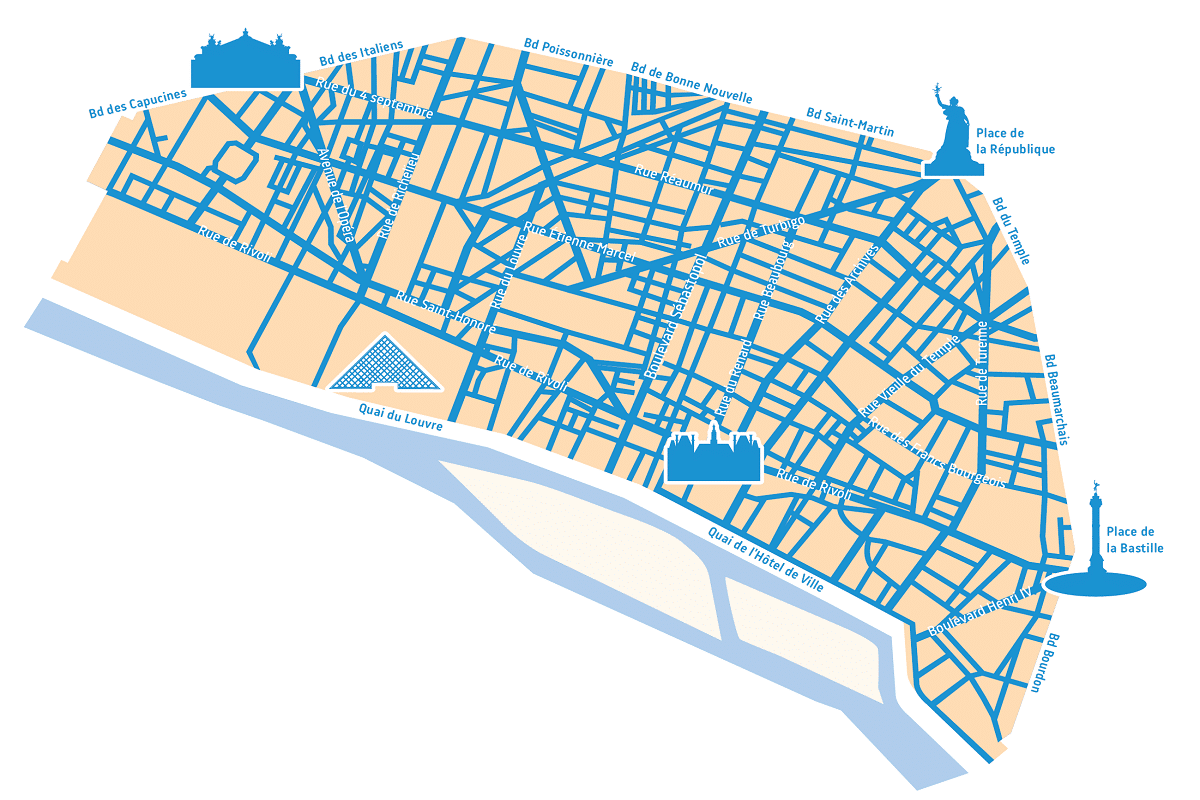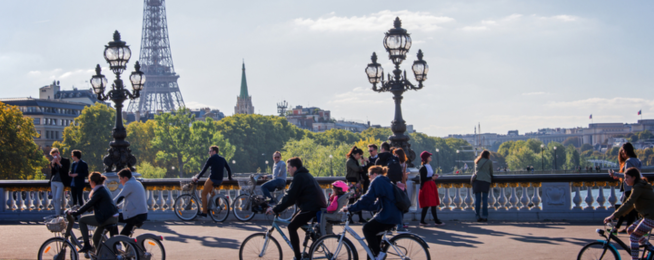As Australia's big-city politicians push to squeeze more cars along their streets, Paris continues its successful strategy to filter cars out, giving more space to people and making streets more attractive and economically vibrant.
The city now bans through traffic, reserving the streets for emergency vehicles buses, taxis, people with reduced mobility, residents and so-called "destination traffic" including those in the area for a specific reason such as a medical appointment, shopping, or cinema visit.
The Council of Paris expects a decrease in traffic of up to 30% on the busiest roads, a decrease in noise and an improvement in air quality due to a drop in nitrogen dioxide concentrations.

Zone à Trafic Limité. Source: paris.fr
The decree applies to the first, second, third and fourth districts in the capital, an area of some 5.5km square, which includes landmarks such as the Louvre Museum and Tuileries Gardens.
The system will be enforced via a system of proof of residence and online declarations, with an initial grace period.
Limited Traffic Zones (Zone à Trafic Limité, or ZTL) are established in many European cities, including London, Barcelona, Madrid, Milan and Rome, and the trend continues to spread.
About 110,000 people live in central Paris and a recent study in The Lancet Planetary Health estimates more than 2500 people die prematurely in the French capital due to nitrogen dioxide pollution.
In Australia however, if the recent local government elections are any guide, it is imagination that appears limited, with leadership aspirants campaigning to cut back on active travel and bike lanes in preference for increasing low-value, through-traffic and its bring-your-own congestion.
Studies show that only about 3% of people visiting Melbourne's CBD for business drive.
Or become our friend and subscribe to receive our fortnightly newsletter.


